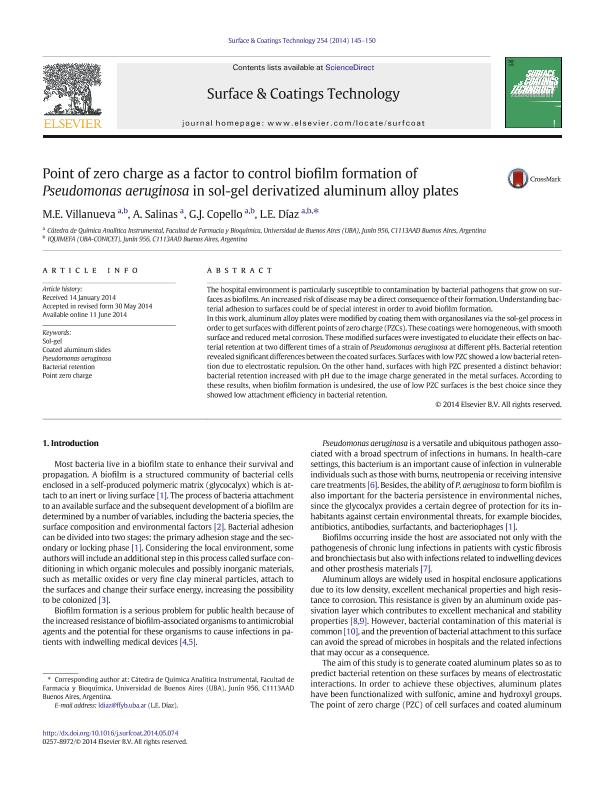Artículo
Point of zero charge as a factor to control biofilm formation of Pseudomonas aeruginosa in sol-gel derivatized aluminum alloy plates
Fecha de publicación:
06/2014
Editorial:
Elsevier
Revista:
Surface and Coatings Technology
ISSN:
0257-8972
Idioma:
Inglés
Tipo de recurso:
Artículo publicado
Clasificación temática:
Resumen
The hospital environment is particularly susceptible to contamination by bacterial pathogens that grow on surfaces as biofilms. An increased risk of disease may be a direct consequence of their formation. Understanding bacterial adhesion to surfaces could be of special interest in order to avoid biofilm formation. In this work, aluminum alloy plates were modified by coating them with organosilanes via the sol-gel process in order to get surfaces with different points of zero charge (PZCs). These coatings were homogeneous, with smooth surface and reduced metal corrosion. These modified surfaces were investigated to elucidate their effects on bacterial retention at two different times of a strain of Pseudomonas aeruginosa at different pHs. Bacterial retention revealed significant differences between the coated surfaces. Surfaces with low PZC showed a low bacterial retention due to electrostatic repulsion. On the other hand, surfaces with high PZC presented a distinct behavior: bacterial retention increased with pH due to the image charge generated in the metal surfaces. According to these results, when biofilm formation is undesired, the use of low PZC surfaces is the best choice since they showed low attachment efficiency in bacterial retention.
Archivos asociados
Licencia
Identificadores
Colecciones
Articulos(IQUIMEFA)
Articulos de INST.QUIMICA Y METABOLISMO DEL FARMACO (I)
Articulos de INST.QUIMICA Y METABOLISMO DEL FARMACO (I)
Citación
Villanueva, María Emilia; Salinas, A.; Copello, Guillermo Javier; Diaz, Luis Eduardo; Point of zero charge as a factor to control biofilm formation of Pseudomonas aeruginosa in sol-gel derivatized aluminum alloy plates; Elsevier; Surface and Coatings Technology; 254; 6-2014; 145-150
Compartir
Altmétricas




